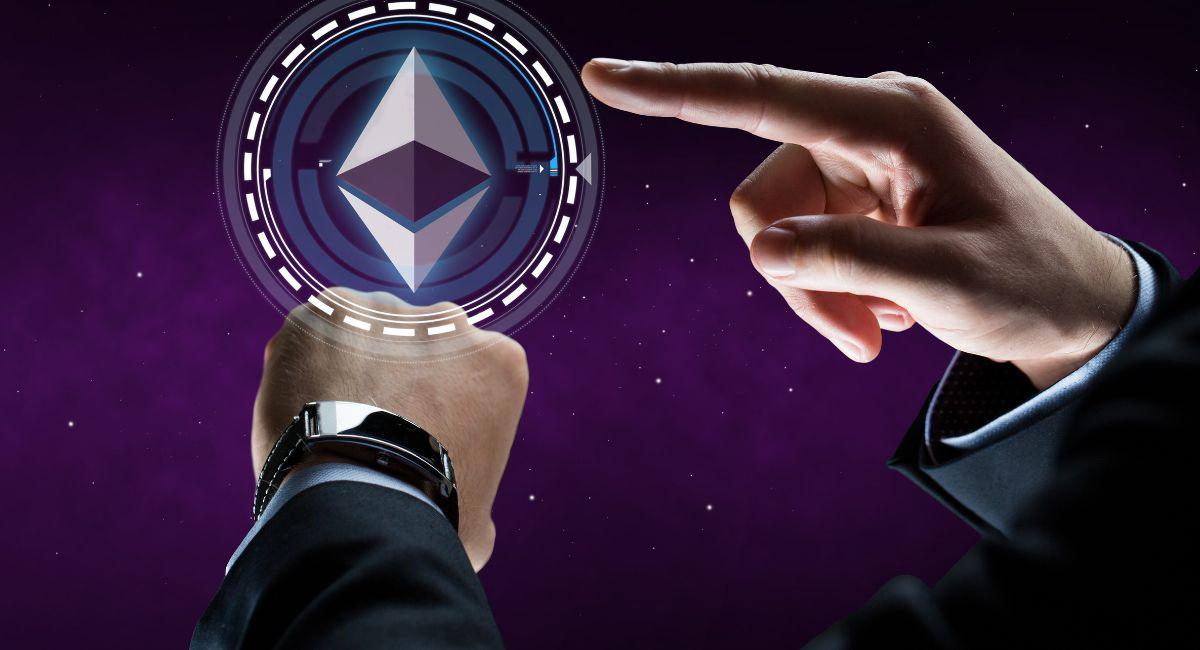Top 10 Ways To Unlock The Potential Of Ethereum Virtual Machine Through Solidity
The Ethereum Virtual Machine (EVM) is a pivotal component within the Ethereum blockchain, serving as the runtime environment for executing smart contracts. Introduced by Ethereum’s creator, Vitalik Buterin, the EVM is a key innovation that enables decentralized and trustless computation on the Ethereum network.
The EVM operates as a sandboxed environment, meaning it isolates the execution of smart contracts from the rest of the Ethereum network. This isolation ensures that the outcome of a smart contract’s execution is deterministic and can be replicated across all nodes in the network. The EVM’s design is crucial for maintaining consensus and enabling decentralized applications (DApps) to run reliably across the Ethereum blockchain.
One of the defining features of the EVM is its bytecode execution model. Smart contracts written in high-level programming languages like Solidity are compiled into bytecode, a set of low-level instructions that the EVM can understand. This bytecode is what gets executed on the EVM, allowing for the creation and deployment of complex decentralized applications.
Smart contracts on the EVM are executed by Ethereum nodes, which validate and reach consensus on the outcomes. The gas mechanism is introduced to control the computational resources consumed by smart contracts. Users must pay a fee in ether (ETH) for the computational steps and storage their smart contract consumes, preventing abuse and ensuring the network’s efficiency.
The EVM’s architecture includes a stack-based structure, where operations are performed using a Last-In-First-Out (LIFO) stack. It supports various cryptographic operations, logic operations, and arithmetic operations, allowing for the creation of versatile and secure smart contracts.
Solidity, Ethereum’s primary smart contract programming language, is specifically designed to interact seamlessly with the EVM. Solidity’s syntax and features are tailored to facilitate the creation of complex smart contracts, enabling developers to implement a wide range of functionalities, including token creation, decentralized finance (DeFi) protocols, and non-fungible tokens (NFTs).
The EVM has been a catalyst for the rapid growth of the Ethereum ecosystem, enabling developers to build decentralized applications with a high degree of flexibility and security. However, it is not without challenges, notably concerns around scalability and the high cost of gas fees during periods of network congestion. Ethereum 2.0, the ongoing upgrade to Ethereum, aims to address some of these challenges by transitioning to a proof-of-stake consensus mechanism and introducing various scalability solutions.
In summary, the Ethereum Virtual Machine is a fundamental component of the Ethereum blockchain, providing the execution environment for smart contracts. Its bytecode execution model, gas mechanism, and support for various operations make it a powerful tool for decentralized application development, contributing to Ethereum’s prominence in the blockchain space.
Also, read- Your Ultimate Guide To The Cross Chain AI Hub With Ethereum
Top 10 Importance of Ethereum Virtual Machine

The Ethereum Virtual Machine (EVM) holds paramount importance within the Ethereum ecosystem, serving as the execution environment for smart contracts. Its significance lies in several key aspects that contribute to the functionality, security, and extensibility of the Ethereum blockchain:
- Smart Contract Execution:
- The EVM is the runtime environment where smart contracts are executed. Smart contracts are self-executing contracts with the terms of the agreement directly written into code. This enables decentralized applications (DApps) to operate autonomously and transparently without the need for intermediaries.
- Decentralized Applications (DApps):
- The EVM facilitates the development and deployment of DApps on the Ethereum blockchain. DApps can cover a wide range of use cases, including decentralized finance (DeFi), non-fungible tokens (NFTs), supply chain management, and more. The EVM’s execution of smart contracts is essential for the decentralized nature of these applications.
- Interoperability:
- The EVM ensures interoperability by providing a standardized environment for executing smart contracts. Developers can write smart contracts in high-level languages like Solidity, and these contracts can run uniformly on any Ethereum node. This standardization fosters compatibility and ease of integration across a diverse array of applications.
- Decentralized Autonomous Organizations (DAOs):
- DAOs are entities governed by smart contracts, enabling decentralized decision-making. The EVM plays a crucial role in supporting DAOs by executing the code that governs their rules and operations. This includes voting mechanisms, fund management, and other governance-related functionalities.
- Immutable and Tamper-Resistant Code:
- Once deployed on the EVM, smart contracts become immutable and tamper-resistant. The code and rules defined within a smart contract cannot be altered after deployment, ensuring a high level of security and trust in the execution of decentralized applications.
- Token Standards and Interactions:
- The EVM facilitates the creation and interaction of tokens adhering to standards like ERC-20 (fungible tokens) and ERC-721 (non-fungible tokens). These standards ensure that tokens behave consistently across the Ethereum ecosystem, promoting interoperability and ease of integration.
- Security and Deterministic Execution:
- The EVM’s design ensures deterministic execution of smart contracts, meaning that the outcome of contract execution is consistent across all nodes. This determinism is crucial for reaching consensus on the state of the Ethereum blockchain and maintaining the security and integrity of the network.
- Gas Mechanism for Resource Management:
- The EVM incorporates a gas mechanism to manage computational resources and prevent abuse. Users must pay for the computational steps and storage their smart contracts consume, preventing scenarios of infinite loops or excessive resource usage. This mechanism helps maintain the efficiency and fairness of the Ethereum network.
- Innovation and Development:
- The EVM serves as a fertile ground for innovation and development within the Ethereum ecosystem. Developers can experiment with various use cases, create novel applications, and contribute to the vibrant decentralized finance, gaming, and NFT ecosystems that have flourished on Ethereum.
- Upgrades and Ethereum Improvement Proposals (EIPs):
- The EVM can be upgraded through Ethereum Improvement Proposals (EIPs), allowing for enhancements and optimizations. Developers can propose changes to the EVM that, when accepted, can lead to improvements in performance, security, and functionality.
The Telos $TLOS @HelloTelos Ethereum Virtual Machine #EVM is ideal for uninterrupted gaming, seamless transactions, and future-ready payments due to its high throughput, low latency and speedy block times.
— 🟣 TJ (@tjx_crypto) February 1, 2024
It offers near-instant transaction confirmations, ultra-affordable fixed… pic.twitter.com/erFRdFG4he
Understanding Ethereum Virtual Machine (EVM) through Solidity

Unlocking the true potential of the Ethereum Virtual Machine (EVM) through exploring the details of Solidity involves understanding and leveraging the capabilities of both the EVM and the Solidity programming language. Here are 10 ways to achieve this:
- Master Solidity Programming:
- Gain a deep understanding of Solidity, Ethereum’s primary smart contract language. Explore its syntax, data types, and features to write efficient and secure smart contracts.
- Optimize Gas Efficiency:
- Gas consumption is critical in Ethereum. Learn how to write gas-efficient code by minimizing unnecessary computations, using storage judiciously, and optimizing loops. This skill is crucial for reducing transaction costs and improving the overall performance of your smart contracts.
- Utilize Ethereum Libraries:
- Leverage existing Ethereum libraries and frameworks to enhance development efficiency. Libraries such as OpenZeppelin provide pre-audited and secure smart contract components that can be integrated into your projects.
- Understand Ethereum Improvement Proposals (EIPs):
- Stay updated on Ethereum Improvement Proposals, especially those related to the EVM. Understanding proposed changes to the EVM can help you adapt your smart contracts to upcoming upgrades and improvements in the Ethereum network.
- Explore Security Best Practices:
- Familiarize yourself with security best practices for smart contract development. Implement measures such as input validation, access control mechanisms, and protection against reentrancy attacks to enhance the security of your contracts.
- Experiment with Decentralized Finance (DeFi) Protocols:
- Dive into the world of decentralized finance by exploring and implementing DeFi protocols. Solidity allows developers to create decentralized exchanges, lending platforms, and yield farming strategies, contributing to the vibrant DeFi ecosystem.
- Develop Non-Fungible Tokens (NFTs):
- Create and deploy Non-Fungible Tokens (NFTs) using Solidity. NFTs have gained immense popularity for representing ownership of unique digital assets, such as digital art, collectibles, and virtual real estate.
- Implement Governance Mechanisms:
- Explore governance models by incorporating on-chain governance mechanisms into your smart contracts. This enables decentralized decision-making within your applications, giving stakeholders a say in protocol upgrades and changes.
- Experiment with Layer 2 Solutions:
- Explore Layer 2 scaling solutions to address Ethereum’s scalability challenges. Solutions like Optimistic Rollups and zk-rollups can significantly improve transaction throughput and reduce fees, enhancing the scalability of your applications.
- Contribute to the Ethereum Community:
- Actively participate in the Ethereum community by sharing your knowledge, contributing to open-source projects, and collaborating with other developers. Engaging with the community allows you to stay informed about the latest advancements and best practices in EVM and Solidity development.
By delving into the intricacies of Solidity and actively experimenting with various aspects of the Ethereum Virtual Machine, you can unlock the true potential of this powerful blockchain platform. This hands-on approach, coupled with continuous learning and community engagement, will enable you to navigate the evolving landscape of Ethereum development effectively.
Conclusion
In conclusion, the Ethereum Virtual Machine (EVM) stands as the backbone of the Ethereum blockchain, playing a central role in the execution of smart contracts and powering a diverse ecosystem of decentralized applications. Its significance lies in fostering decentralization, innovation, and trust within the Ethereum network.
The EVM’s ability to execute tamper-resistant and deterministic smart contracts has paved the way for the development of decentralized applications spanning decentralized finance (DeFi), non-fungible tokens (NFTs), governance structures, and more. The interoperability provided by the standardized execution environment allows developers to create applications that seamlessly interact with each other and contribute to a cohesive blockchain ecosystem.
Security is a paramount consideration, and the EVM’s design, along with features like the gas mechanism, ensures the integrity of smart contract execution while preventing abuse and resource exhaustion. The immutability of deployed smart contracts adds an additional layer of trust, assuring users that the rules encoded in the contracts will remain unchanged once deployed.
Moreover, the EVM serves as a platform for continuous innovation. Developers can propose and implement upgrades through Ethereum Improvement Proposals (EIPs), allowing the EVM to evolve and adapt to the changing needs of the blockchain space.
In essence, the Ethereum Virtual Machine is not just a technical component; it represents the core philosophy of Ethereum, empowering developers and users to engage in a decentralized, transparent, and secure digital environment. As Ethereum continues to evolve, the EVM remains a foundational element driving the blockchain’s success and its position as a pioneering force in the broader blockchain ecosystem.
Stay informed with daily updates from Blockchain Magazine on Google News. Click here to follow us and mark as favorite: [Blockchain Magazine on Google News].
Get Blockchain Insights In Inbox
Stay ahead of the curve with expert analysis and market updates.
latest from tech
Disclaimer: Any post shared by a third-party agency are sponsored and Blockchain Magazine has no views on any such posts. The views and opinions expressed in this post are those of the clients and do not necessarily reflect the official policy or position of Blockchain Magazine. The information provided in this post is for informational purposes only and should not be considered as financial, investment, or professional advice. Blockchain Magazine does not endorse or promote any specific products, services, or companies mentioned in this posts. Readers are encouraged to conduct their own research and consult with a qualified professional before making any financial decisions.

 Bitcoin
Bitcoin  Ethereum
Ethereum  Tether
Tether  XRP
XRP  Solana
Solana  Dogecoin
Dogecoin  USDC
USDC  Lido Staked Ether
Lido Staked Ether  Cardano
Cardano  TRON
TRON  Avalanche
Avalanche  Chainlink
Chainlink  Toncoin
Toncoin  Wrapped stETH
Wrapped stETH  Shiba Inu
Shiba Inu  Wrapped Bitcoin
Wrapped Bitcoin  Sui
Sui  Hedera
Hedera  Stellar
Stellar  Polkadot
Polkadot  WETH
WETH  Bitcoin Cash
Bitcoin Cash  LEO Token
LEO Token  Hyperliquid
Hyperliquid  Uniswap
Uniswap  Litecoin
Litecoin  Pepe
Pepe  Wrapped eETH
Wrapped eETH  NEAR Protocol
NEAR Protocol  Ethena USDe
Ethena USDe  Aave
Aave  USDS
USDS  Internet Computer
Internet Computer  Aptos
Aptos  POL (ex-MATIC)
POL (ex-MATIC)  Cronos
Cronos  Mantle
Mantle  Ethereum Classic
Ethereum Classic  Render
Render  Bittensor
Bittensor  WhiteBIT Coin
WhiteBIT Coin  MANTRA
MANTRA  Monero
Monero  Artificial Superintelligence Alliance
Artificial Superintelligence Alliance  Dai
Dai  Arbitrum
Arbitrum  Filecoin
Filecoin 



